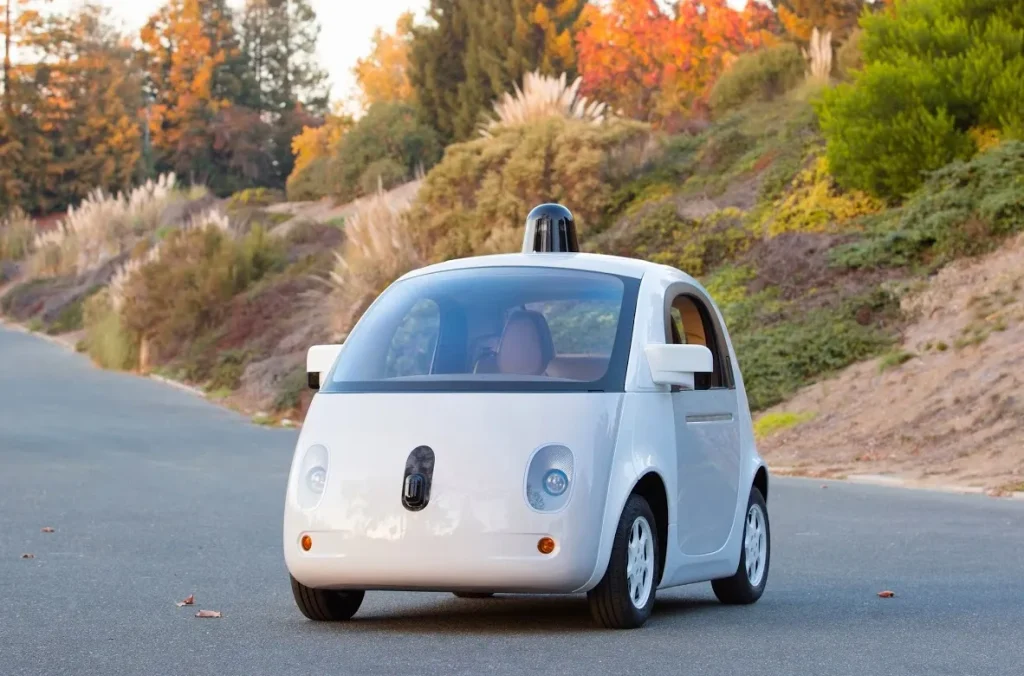Autonomous vehicles use radar, cameras and LiDar (light detection and ranging) technology to assess their environment. Powerful processors onboard process the data they acquire before sending signals that control actuators like steering and braking mechanisms.
Goal of autonomous vehicles (AVs) is to transport passengers safely without human drivers on board, yet these AVs still experience many failure modes that are hard to anticipate.
1. Google’s Self-Driving Car
Driverless cars could make life much simpler for companies by making deliveries, transporting employees or customers, or transporting long-haul cargo shipments – with potential consequences for regulators, lawmakers and insurance providers alike.
Google’s self-driving car, commonly referred to as Snickers, is a modified Toyota Prius fitted with three main electronic “eyes” that use radar, cameras, and lidar technology (light detection and ranging). Together these sensors help neural networks understand its environment before planning routes accordingly.
The Snickers has been designed to abide by road rules and act safely, though it’s far from perfect. For instance, when entering four-way intersections it yields to other cars but sometimes needs to assertively assert itself if drivers fail to reciprocate; similarly it cannot differentiate between rocks and crumpled paper, making navigation challenging on narrower roads; it cannot drive in snow either and doesn’t manage well when faced with construction zones.
2. Waymo’s Self-Driving Car
Waymo self-driving cars feature an automated call center that will notify them whenever something in their environment requires human assistance, prompting a human driver to intervene and take over control.
Waymo vehicles contain sensors consisting of cameras and LiDARs – laser pulses fired at objects are measured to create a 3D map of their surroundings – while 29 cameras allow drivers to detect pedestrians, other cars, and road obstacles.
Waymo trains its AI with simulations that challenge its vehicle with numerous scenarios and collect responses data to identify areas for improvement. Furthermore, any situations encountered in real life can then be recreated within the simulator for additional training purposes – effectively giving its system a year’s worth of experience in just 24 hours!
3. Tesla’s Self-Driving Car
Tesla cars feature sensors, cameras, and AI technology that allows them to drive themselves to some extent; however, these systems must still be monitored by human supervision for full implementation; unlike Waymo’s system which operates autonomously without supervision by drivers, Tesla Autopilot requires constant human involvement even during full autonomous mode driving mode.
The company’s Enhanced Autopilot and Full Self-Driving Capability systems do not automatically make lane changes, turn left or right, navigate expressway ramps, park, summon, recognize traffic lights or signs or recognize traffic lights and signs; nor can they operate in bad weather conditions.
Tesla’s self-driving technology relies heavily on cameras that cannot see through fog or darkness and lack redundancy for camera failure, unlike Waymo which heavily invests in physical testing by driving billions of test miles in simulation environments and millions more with safety drivers on real roads.
4. Uber’s Self-Driving Car
Following an accident involving its own autonomous cars, Uber decided to partner with Waymo to offer riders rides in its autonomous vehicles.
Customers in Uber’s operating territory who request rides within Waymo’s cars will be randomly assigned one depending on availability, with an update sent directly to their app notifying them and offering them the choice whether or not they’d like the vehicle, cost being comparable with regular Uber car rides.
Hardware engineers take over when required; such as when their sensors detect an unusual event such as a dropped bicycle or another car merging into your lane – such events are known as edge cases and may prove challenging for AVs to handle. Overall, Waymo’s cars have lower crash rates than Uber and significantly better ones than Cruise, making significant strides forward towards full automation while the road still remains long and winding.
 Electric Vehicle Insurance: What You Need to Know (And What You’ll Pay)
Electric Vehicle Insurance: What You Need to Know (And What You’ll Pay)  Car-Sharing in the Countryside: A New Road to Rural Freedom
Car-Sharing in the Countryside: A New Road to Rural Freedom  Adaptive Vehicle Modifications: Unlocking Freedom and Safety for Aging Drivers
Adaptive Vehicle Modifications: Unlocking Freedom and Safety for Aging Drivers 

